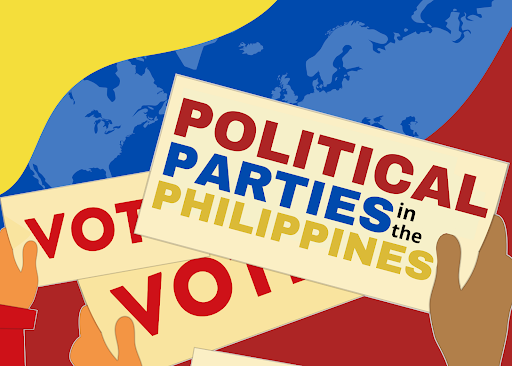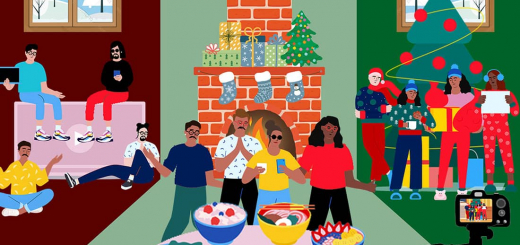Political Parties in the Philippines

As the upcoming 2022 election nears each passing day, the main question on every Filipino mind is, “Who am I voting for?” It’s a query some have yet to answer as the OctaResearch April Survey shows that about 1% of the population is still undecided. So, if you’re looking for a quick summary of what each political party stands for, their core establishments, and above all, their main goals, you’ve come to the right place! We’ll be discussing political parties in the Philippines and which presidential candidates, senators, and other politicians fall under them in order to gather a clearer view of the leaders who can create the change you yearn to see in the nation.
With the Philippines’ diverse population and beliefs, the nation has accumulated more than fifty Political Parties since 1907. Each group holds a certain vision that all members under it follow. The awareness of Political Parties rather than just the candidate themselves allow voters to get a better picture of the possible reformations, laws, and projects politicians will make when elected. In the Philippines, there are four paramount parties that have a rich history and numerous representatives under them. These include Liberal Party (LP), United Nationalist Alliance (UNA), Nacionalista Party, and Nationalist People’s Coalition (NPC).
Also known as Partido Liberal, the Liberal Party of the Philippines (LP) is the second oldest political party in the Philippines, and the oldest continually-active political party in the Philippines. It is said that Partido Liberal was established by then senators President Manuel Roxas, President Elpidio Quirino, and former 9th Senatorial District Senator José Avelino, on January 19, 1946. This was done in order to break away from the Old Nacionalista Party as the then senators idealized a more solid yet independent assembly. The archives of the Library of Congress report that historically, the party’s ideology during its early years was noted by some political observers to be indistinguishable from the Nacionalista Party until the dictatorial term of Ferdinand Marcos, when it became more liberal. Now, Presidential aspirant Maria Leonor “Leni” Gerona Robredo sits as the chairperson of the Liberal Party alongside LP’s president Francis “Kiko” Pangilinan, who runs as Ms. Robredo’s Vice President.
Thus, if the change you’re looking for is a rectification of human rights such as challenging the return of the death penalty, challenging the minimum age of criminal responsibility, termination of drugs on war, and endorsement of better welfare for workers, then preferably, the Liberal Party would be the Political Party to look into. It must also be noted that the Liberal Party is a member of the Council of Asian Liberals and Democrats and the Liberal International. Today, the Liberals maintain at least six seats in the Senate and at least 27 of the seats in the House of Representatives (Library of Congress).
In 2012, the Comelec recognized the United Nationalist Alliance as a political coalition between Binay’s Partido Demokratiko Pilipino-Lakas ng Bayan (PDP-Laban) and Manila Mayor Joseph Estrada’s Pwersa ng Masang Pilipino (PMP). These two parties had established a partnership in the United Opposition during the 2007 election. Moreover, Estrada and Binay were running mates during the 2010 presidential election. The United Nationalist Alliance began as a multi-party electoral alliance to replace the former United Opposition (UNO) coalition for the 2013 midterm elections, before being rebranded as a single political party on July 1, 2015. This was initiated by Jejomar Binay in preparation for his presidential campaign in 2016. UNA may have been the youngest political party on this list, but it was recognized by the Comelec as the dominant minority party for the 2016 elections. The party is center-right in ideology and implements conservative politics.
Sometime in 1990, a group of private and individual political figures worried over the national, political and economic disarray, approached former Ambassador Eduardo “Danding” Cojuangco to ask him to lead a national coalition in the forthcoming presidential elections. In 1992, the Nationalist People’s Coalition was formed and despite the loss of former presidential candidate Enduardo Conjuangco in the 1992 elections, the NPC left a mark in Philippine history with the triumphant Vice Presidential landslide voting for former President Joseph Estrauda. The Political Party continues to be a strong contender in the world of politics with over 14.05% of its members seating in the House of Representatives while a total of 8.65% of Senators in the 2019 Senate represent the group.
With NPC’s priorities diverging from national healthcare, laws establishing data privacy, and better budget reform, it is a political party that many conservatives in the nation approve of. In the 2022 elections, a few senatorial candidates include Senator Loren Legarda, who authored the Anti-Domestic Violence Act against women and children, and Senator Francis Joseph “Chiz” Guevara Escudero, who aided in the provision of free medical services through the implementation of the Universal Health Care Act. The Nationalist People’s Coalition prides itself working effectively, efficiently, and more inclusively towards the change in Filipino healthcare by issuing guidelines on how LGUs can properly use their funds to purchase rapid test kits, subject to other protocols set by the DOH.
Sitting on top of the list of the oldest political parties in the Philippines and the whole Southeast Asia is the Nacionalista Party, sometimes referred to as Partido Nacionalista. The party originated as a group that began in 1901 during the Philippine-American War and continued until 1907 when it was recognized as a political party in the Philippine Assembly. Partido Nacionalista was founded by former presidents Manuel L. Quezon and Sergio Osmena, initially having its main political goal as achieving full independence from the United States.
As years passed, Partido Nacionalista sought to evolve its goal as a political party. According to its website, it aims for a government that is always in line with the Filipino people’s ideals. Moreover, it wants to preserve and develop the nation’s patrimony, to promote the general welfare, and ensure that they and their posterity experience independence under a regime of justice, liberty, and democracy.
The Nacionalista Party was the country’s ruling party from 1935 to 1946, wherein Manuel Quezon and Sergio Osmeña won the presidency and the vice presidency, respectively. Similarly, Ramon Magsaysay and Carlos P. Garcia had won the two highest political seats from 1953 to 1961, and Ferdinand Marcos had been appointed President from 1965 until 1972, all while belonging to Partido Nacionalista. Today, the party holds four Senate seats and 29 seats in the House of Representatives.
Though the Philippines is composed of multiple Political parties- each honing their own strengths and ideals, these four aforementioned groups dominate and continue to impress the Philippines with their rich heritage, accomplished duties and future advocacies. So, whichever political party or candidate you prefer, we must remember to choose not only those who suit our preferences but relay what the nation needs. As Dr. Rizal states, “On this battlefield, man has no better weapon than intelligence, no other force than his heart.” Hopefully, the long-awaited question of “who are you voting for?” has now been answered with confidence, reassurance, and faith towards the betterment of Filipino lives, moreover, its nation.





